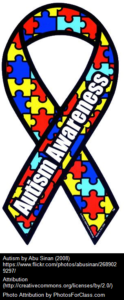This April is Parkinson’s Awareness Month. Many organizations use the month of April to bring awareness to the disease. Parkinson’s disease (also known as PD) is a chronic movement disorder that gets worse over time. Over one million people in the US are living with Parkinson’s disease. The cause of this disease is unknown and there is no cure; however; there are various treatments available, such as surgery and medication that can help manage some of the symptoms.
Parkinson’s occurs when crucial nerve cells in the brain, called neurons malfunction and die. These neurons are also responsible for producing dopamine, a chemical that affects movement. When the amount of neurons in the brain is reduced, dopamine is also reduced. A person is unable to control movement normally when the amount of dopamine in the brain is decreased.
Symptoms of Parkinson’s disease include slowness of movement, tremor of the hands, arms, legs, jaw, and face, stiffness of the limbs, and an impaired balance and coordination.
This Saturday, April 30th, the 22nd Parkinson’s Unity Walk will take place in Central Park. Legendary boxer Muhammad Ali’s daughter Maryum is bringing awareness to the disease. Her father was in his late 30s when his family began to notice symptoms of Parkinson’s. Maryum, along with Carol Walton, the CEO of the Parkinson Alliance, will attend the walk. Walton said in an interview with CBS news, “one of the most important messages we are still trying to get out is that if you are diagnosed with Parkinson’s, you absolutely must go see a Movement Disorder specialist, not just a neurologist.” Movement disorder specialists have two more years of training in these types of movement disorders. The type of treatment recommended can make a huge difference in the treatment of Parkinson’s.
The Unity Walk not only raises awareness of the disease but also helps to bring more funds for research, as well as provide a day of community and education. Maryum went on to say, “if my dad had something like a Unity Walk when he was first diagnosed, he wouldn’t have felt so alone.”

